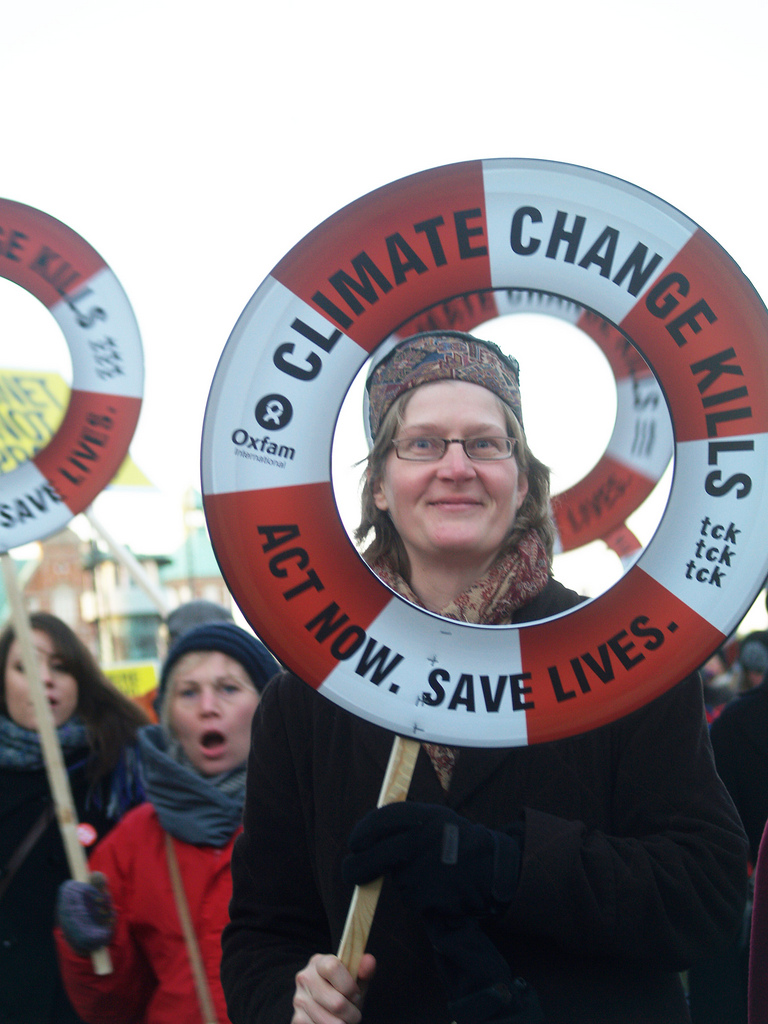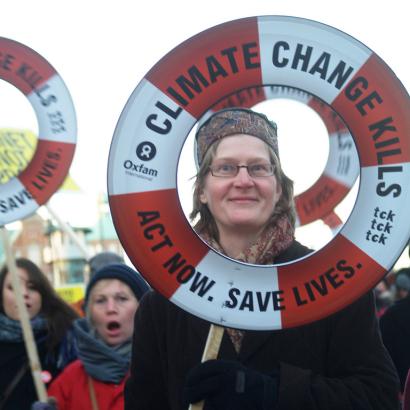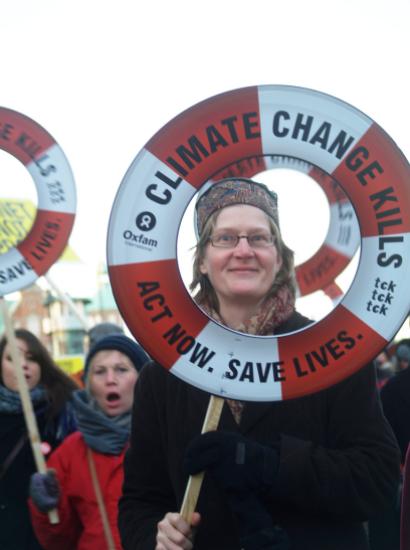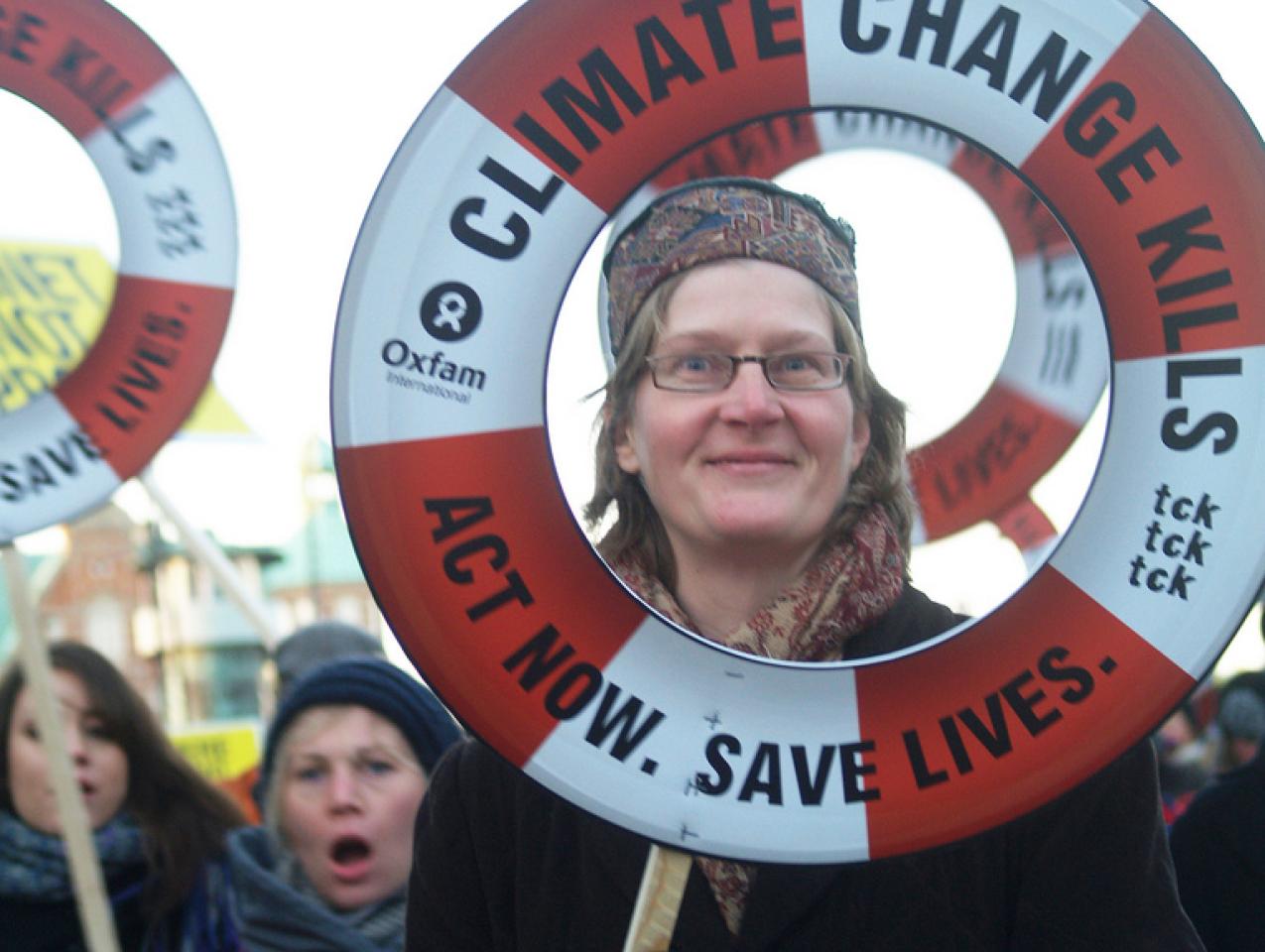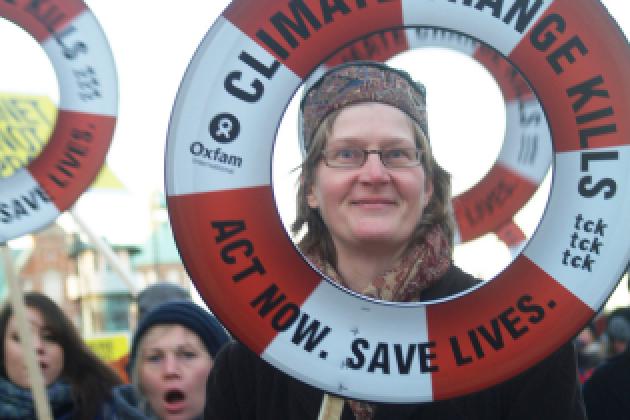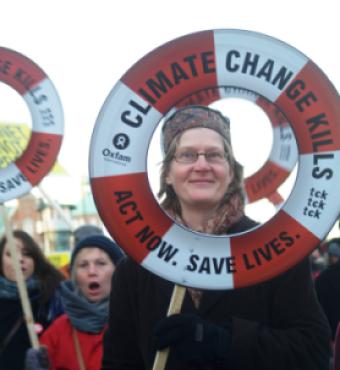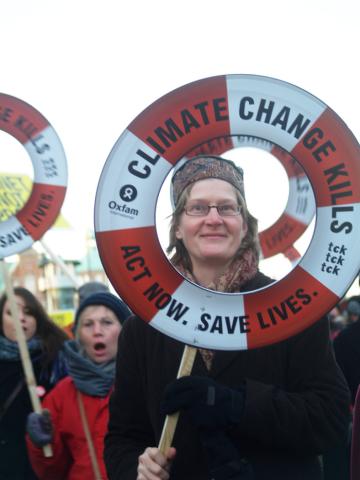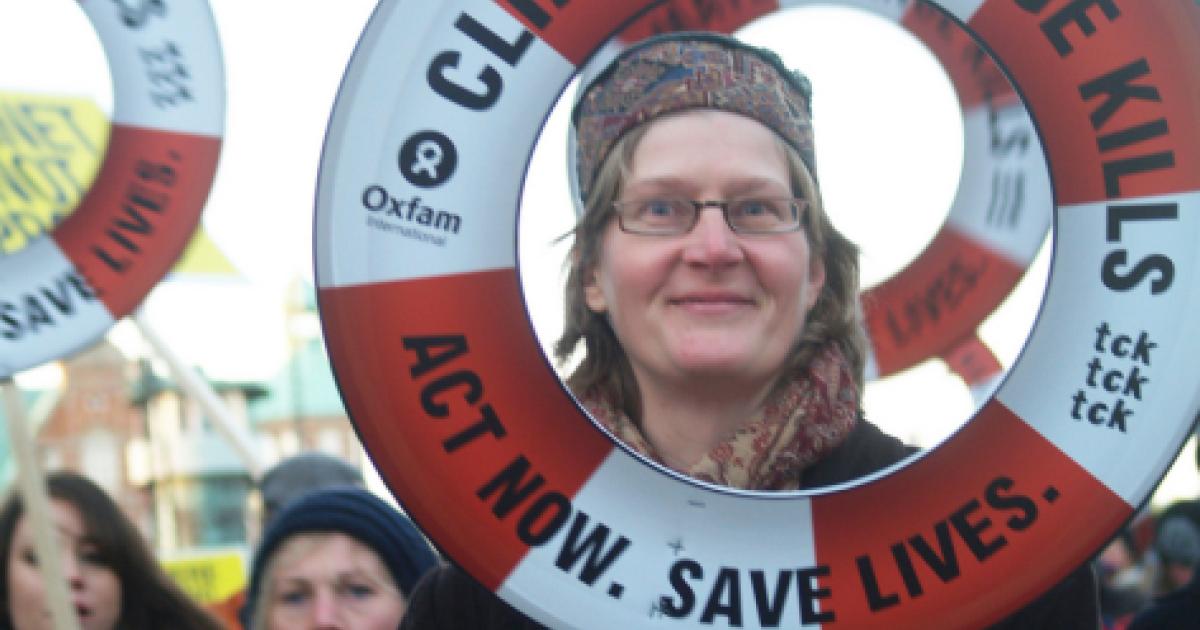- Energy & Environment
Cocktail party debates about climate change are usually based on what happened with the weather yesterday. Record snowfall in the East during the winter of 2015 shows that global warming is not happening; drought in California and a heat wave in the west during the summer of 2015 is taken as evidence that it is. Of course, these individual observations of the weather tell us nothing about global warming.
To knowing whether the earth is warming we need to take a long-term perspective. Data used by climate scientists who study global warming are deviations of annual mean global temperatures from the 1951-1980 average. They clearly show that temperatures have been rising for more than a century. A linear regression fitted to the data shows temperatures are increasing at a rate of 0.67°C per century.
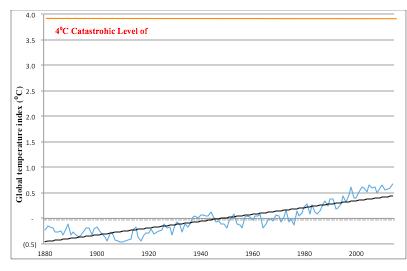
This raises the crucial question of how significant this warming is. The standard used by many climate scientists is that a warming of 4°C would be catastrophic. Applying the linear trend of 0.67°C per century, it will take over 500 years to reach that level. Even accounting for the possibility that global temperature is increasing at an increasing rate, it still will take over 130 years for “catastrophic” increases to occur.
Of course, these estimates are based on historic trends, not the sophisticated “climate models” used by scientists of the Intergovernmental Panel on Climate Change (IPCC), who vociferously cry “the sky is falling,” or by the likes of Al Gore, who thinks that anyone denying the severity of global warming should be thrown in jail. They all believe in predictions from climate models—not temperature records—which predict warming will be much faster than in the past, putting temperatures 4°C higher in 50 years.
Responding to Fortune when asked to comment on an extrapolation based on past trends compared to predictions from climate models, James Hansen, a respected climate scientist from Columbia University, stooped to saying “within less than a year, you will look like complete fools (if you buy this crap).” Such a response sounds more like policy advocacy than climate science. The question for scientists should be how well do the models predict. If one compares IPCC predictions made in 1990 with what actually happened to global temperature, the straight line historic trend comes closer to approximating reality.
Accepting that the earth is warming, what are the appropriate tools for dealing with it? Let’s start with what not to do. The main thrust of the Obama administration’s answer to climate change is a regulatory initiative aimed directly at reducing carbon “pollution” as the EPA calls it. Unless these types of regulations are applied worldwide, U.S. reduction will have no significant effect on global warming because the biggest carbon emitters are developing countries such as China. Even the EPA says that “if we stabilized concentrations and the composition of today’s atmosphere remained steady (which would require a dramatic reduction in current greenhouse gas emissions), surface air temperatures would continue to warm.”
The Obama initiative illustrates another problem, namely that there are other environmental impacts from shifting away from carbon. Republicans who oppose the Obama regulations are using environmental tradeoffs to fight the EPA in Florida, where two-thirds of the endangered manatee population depends on warm water discharged by coal-fired plants. By pitting the EPA against the Endangered Species Act, Republicans hope to delay or kill the proposed carbon emission rules.
Environmental tradeoffs are also a problem for efforts to encourage alternative energy, another weapon in Obama’s war on climate change. As former Secretary of State George Shultz, one of the loudest conservative voices in the fight against global warming, told the Washington Post, “significant and sustained support for energy research and development” is a necessary response to global warming because we now “produce electricity from the wind and the sun at close to the same price we pay for electricity from other sources.” Yet, for all its hype, solar power accounts for such a small percentage worldwide that its share rounds to 0 percent. In the United States, we produced a higher percentage of our electricity from renewables in 1948 (32 percent) than we do today (11 percent) mainly because we rely less on the most viable renewable—hydroelectric power.
Both solar and wind power come with their own environmental effects. Matt Ridley noted in the Wall Street Journal, “to run the U.S. economy entirely on wind would require a wind farm the size of Texas, California and New Mexico combined—backed up by gas on windless days.” The Cape Wind project in Nantucket Sound has been delayed for years by environmental objections. Recently, environmentalists sued San Diego County and five solar companies on the grounds that the land taken up for solar panels was “irreplaceable wildlife habitat.”
Another approach embraced by both liberals and conservatives is cap-and-trade, meaning capping carbon emissions and allowing those receiving the cap to trade their emission permits in the market place. This is another carbon policy that has gained no traction because it hasn’t worked very well. This approach, which was tried by the European Union and appropriately dubbed the Emission Trading Scheme, has collapsed because regulators keep changing the rules and because low natural gas prices have made it easier to reduce carbon emissions by switching from coal to gas.
Perhaps the policy most favored by economists and by policy advocates including George Shultz and the late Gary Becker is a revenue neutral carbon tax. The problem is that any carbon tax will not be determined by blackboard economists; it will be created by special interests in Congress and therefore will never be revenue neutral, will be regressive, and will not eliminate ineffective energy policies.
So where does this leave us regarding what to do about global warming. For starters, there is no need for policy panic. Regardless of whether global temperatures follow the historic trend and take half a millennium to rise by 4°C or follow a “hockey stick” upturn predicted by the IPCC and take one half of a century to rise by 4°C, we have the time to adapt.
Already adaptation is taking place. In a book titled Windfall: The Booming Business of Global Warming, McKenzie Funk documents dozens of business ventures dealing with climate change including those developing giant water bags to float fresh water across oceans and those constructing sea walls.
Researchers at the University of Texas predict that current vineyard acreage will decrease by 25 to 73 percent throughout all major wine regions by 2050. In response, some wine producers are moving from France into Germany and even England.
John Dickerson, founder of Summit Water Development Group, is purchasing and brokering water rights in the American West and Australia as a way of hedging against shifting rainfall patterns. If global warming drives night-time temperatures above 18°C, bean production could fall by 50 percent in those areas. A recent breakthrough from the agricultural research group, CIAGR, however, shows promise for temperature-resilient beans, which could sustain this vital source of protein for millions of people in the developing world.
The typhoon in Vanuatu in March of 2015 illustrates the importance of prosperity when it comes to dealing with climate. Just as poor countries experience more destruction from hurricanes, they will be less able to adapt to global warming. A country such as Bangladesh with a per capita income of $3,190 does not have the wherewithal to build sea walls and tidal diversions as rich countries such as the United States can with a per capita income of $53,750. Getting to the point where they might be able to better adapt will require economic growth. Compounding its current growth rate of 6 percent for fifty years would lift Bangladeshi per capita income to almost $50,000 in 50 years.
This underscores the importance of why it won’t do, as Matt Ridley opined, to tell “the poor to give up the dream of getting richer through fossil fuels.” Taxing or regulating carbon emissions and subsidizing alternative energy sources in the hope of achieving a carbon-free economy will not allow us to deal with the possible consequences of global warming. Even the EPA says that “if we stabilized concentrations and the composition of today’s atmosphere remained steady (which would require a dramatic reduction in current greenhouse gas emissions), surface air temperatures would continue to warm.” In other words, reducing carbon emissions won’t make much difference in global temperatures over the century, but it will seriously impede the poor getting richer.
Recent anthropological research by Penn State University’s Pat Shipman, built on a complete sequencing of the Neanderthal genome, shows that Neanderthals survived many periods of abrupt climate change, including a “volcanic winter” caused by a massive eruption near what is now Naples. If they survived and adapted to abrupt climate change, surely modern man ought to be able to adapt to long-term changes, provided climate policies don’t stifle human progress and economic growth.







